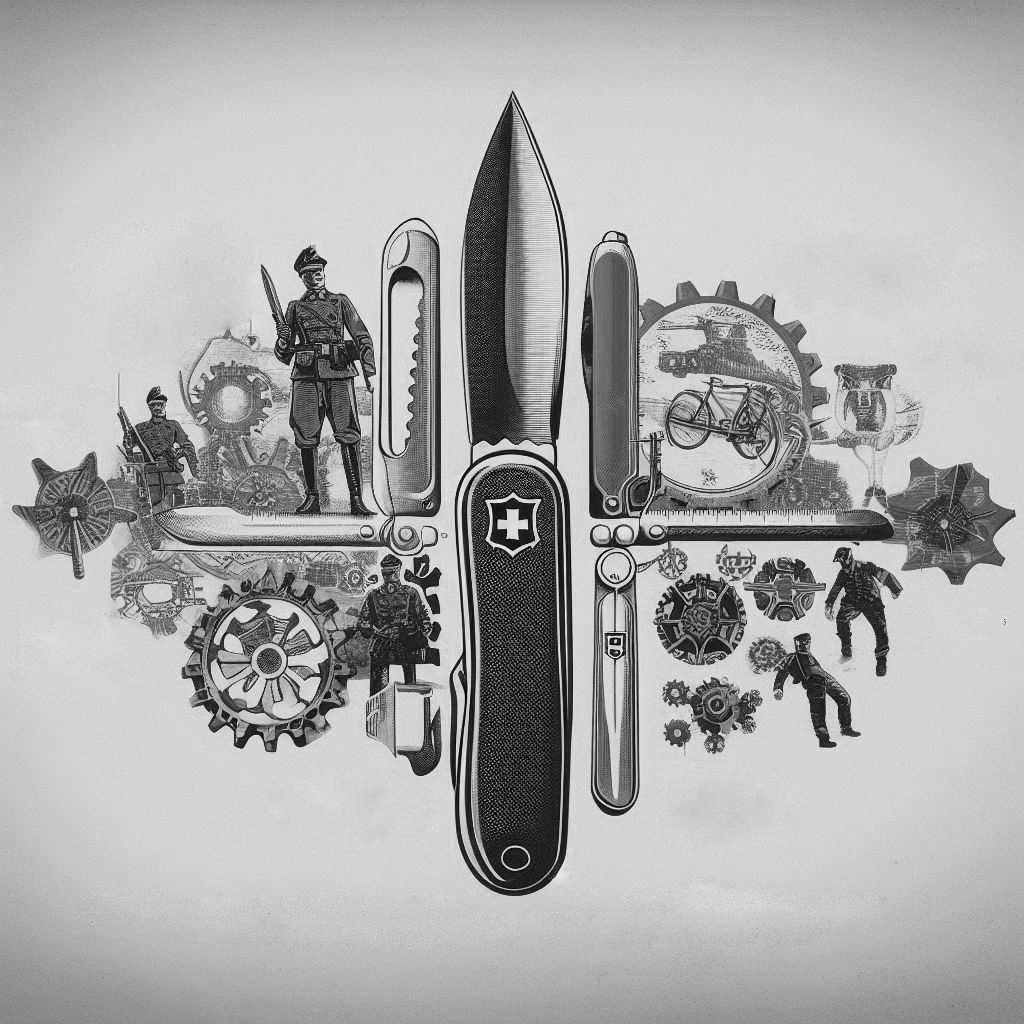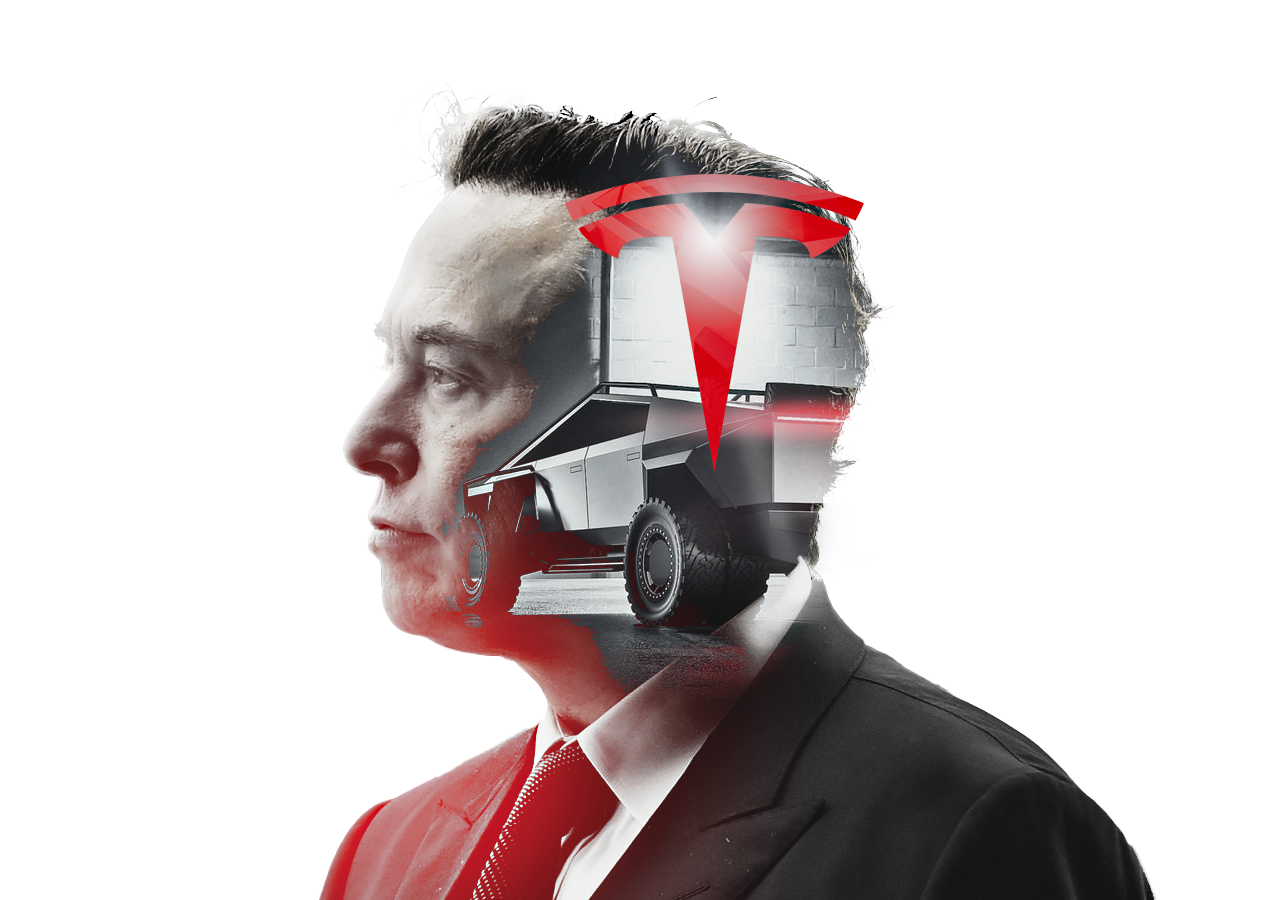The Incredible Rise of Victorinox: How a Small Swiss Knife Company Became an International Brand
Victorinox is one of the leaders in the knife industry and certainly the leader in the market for folding multi-purpose knives. Throughout the last century, this company has been perfecting and popularizing a kind of cultural icon of modern man's life - the Swiss Army knife. Thanks to it, a folding knife is preferred by people of various professions and habits. A penknife for every taste, with any tool that will help in a variety of situations - this is Victorinox's offer. Among pocket knives, the Swiss Army brand is the most recognizable in the world. A symbol of utility, Victorinox's multifunctional device has firmly taken its place among avid travelers, respectable collectors and, of course, military men of all stripes.

It often happens that the best comes as a result of the worst times. This is what happened with Karl Elsener, the founder of the company now called Victorinox. He was the son of a very energetic woman named Victoria, who successfully combined raising twelve children and running a hat shop. But the hat factory and store were inherited by the elder brother, and Karl embarked on his path to success by becoming a knife master. At that time, Switzerland did not produce quality knives, and Karl wanted to become the best master at making them. To this end, he went to study first in Paris and then in southern Germany, where they produced the best knives in Europe. After practicing the production of tools and blades of "surgical" quality, at the age of 24 Karl returned to Switzerland and in 1884 opened a workshop in Ibach to manufacture and repair knives. His mother bought his knives and sold them in the family hat store.
At the end of the 19th century, Switzerland was an industrially underdeveloped country, most of its population was engaged in agriculture. The Swiss army purchased weapons and knives in Germany in the city of Solingen. At some point, Karl Elsener came up with an idea, and in 1890 he undertook a risky venture - in conditions of growing unemployment, he organized an association of Swiss knife masters to jointly produce folding soldier's knives for the Swiss army. 37 craftsmen joined forces and began making the same knives as in Solingen: with a wooden handle, a large blade, a screwdriver, a bottle opener and an awl. The project failed: although the knives were of high quality, their cost price was more expensive than the German ones. A year later, most of the participants abandoned the venture, but, as it turned out later, too hastily.

Karl could have gone bankrupt if not for the support of his mother and the fact that in the same 1891 the army began purchasing domestic knives produced by Elsener in addition to the German ones. Knives from Germany continued to be supplied to the Swiss army, but since 1983 the second Swiss manufacturer - Wenger - also began supplying soldiers with its knives. Elsener came up with and created folding knives with new tools, improving them technically. With each new copy focused on one of the target groups, whose name was given to the knife - "student", "cadet", "farmer" - the popularity of knives grew in new audiences. However, Elsener's commercial genius manifested itself when he reduced the cumbersome design of previous models, patenting in 1897 the knife that brought him fame and financial success - the "Officer's Sport Knife". It was smaller and lighter than previous ones, with a smooth fiber handle and six tools (with an additional small blade convenient for correcting mistakes when writing on paper, and a corkscrew - a companion of officer's leisure), which were fixed by only two springs.
Swiss army officials were in no hurry to purchase the new knife, but the officers themselves liked it very much, and the number of orders at Elsener's factory increased significantly. German craftsmen, appreciating such popularity of the officer's knife, began to copy it. Karl maintained high quality and created a wonderful reputation for the company by devising more and more tools. With new special functions - saws, scissors, tweezers and magnifying glass appeared in the knives - the popularity of knives grew in new audiences. In 1909, when the company turned 25, a white cross on a red shield - the symbol of the Swiss army - began to be used as the logo. That same year, Karl's mother, who had done a lot for him and the company, died. In her honor, the company was named Victoriа, and the stainless steel invented in 1921, which was used in knife production two years later, added the word Inox (from the French Inoxidable - stainless steel) to the name.
That's how the brand got its modern name Victorinox.

Post-war Expansion
It would be foolish to argue that wars and disasters that threw people into extreme situations and put them in conditions isolated from the benefits of civilization were Victorinox's first assistant in business. The country's neutrality during World War II allowed production to continue, and the Allied forces' acquaintance with local goods, including Victorinox products, expanded the popularity of the Swiss Army knife overseas. Back in 1937, the Forschner company began importing Victorinox kitchen knives to the USA, selling them under its own name. The mass consumer was not familiar with the army knives until the Americans began buying them wholesale after World War II. Forschner became the Elsener family's second profitable business. But in 1957 it was sold, and after that, penknives took first place in overseas sales. The huge popularity that the knife gained in the United States and the numerous range of Victorinox models provoked a boom in their collecting. As a result, the US now accounts for 50% of Victorinox exports.
In 1960, the Soviet press mentioned the Swiss Army knife found among other spy gadgets belonging to Francis Powers, whose U-2 was shot down over the USSR. Victorinox has always been highly regarded by pilots - the elite group of the military - as a light and compact tool. Later, in 1978, Victorinox will start purchasing NASA to equip astronauts. In 1974, Forschner, the exclusive Victorinox distributor in the USA, was bought by a new investor who worked not only with wholesalers but also through retail chains. When the company went public in 1981, Charles Elsener, president of Victorinox, held a large portion of the shares.

In its time, German knives were an obstacle for Victorinox in its own market, but in 1976 the West German army made the first purchase of Swiss Army knives, only the place of the cross on the shield was taken by the German eagle. Germany became Victorinox's second largest market after the US. One of the first steps in expanding the brand was the release of survival kits, but large-scale diversification began later when in 1980 Forschner registered the Swiss Army trademark. Logical offshoots of the brand's Swiss origin were watches and sunglasses. Watch sales, with retail prices of $75-500, exceeded all expectations. However, the use of such a trademark led to the fact that in 1996, Forschner, now known as Swiss Army Brands, began paying royalties to the Swiss military department.
Forschner significantly expanded the business by selling Victorinox knives with the customer company's logo applied for use as promotional products. US President Lyndon Johnson handed out about 4,000 Victorinox knives engraved with his personal signature. In the 1990s, about a hundred companies in the US left their logos on Victorinox blades to attract new consumers with their help. Pharmaceutical companies purchased hundreds of thousands of knives to advertise drugs. In 1989, Forschner sold $10 million worth of knives this way. Victorinox knives gained even greater popularity when cases became known of their use in extreme surgery - Victorinox created a medical version of the knife with a new tool that was used in the most common emergency operation - tracheotomy.
One of the best known models, the Swiss Champ, has 24 tools that perform 30 different functions, now displayed at the Museum of Modern Art in New York and the Munich Museum of Applied Art as the best example of industrial design. The enviable success of Victorinox products in the 1980s-1990s stimulated competitors. Schrade Cutlery released its German version of the pocket knife on the US market. Another company, Wenger, signed an agreement with Buck to brand its knives with the popular Buck brand in the US. And in 1992, a Forschner lawsuit stopped the import of Chinese clones with a cross on the shield and the inscription Swiss Army. Numerous improvements and adaptations to various target groups covered even the previously indifferent female segment of buyers: various color variations with manicure and other devices.
The Executive model with an orange peeler and nail file won Victorinox a place in the business world along with the SwissCard - a credit card sized set consisting of scissors, a saw, a toothpick, tweezers, a paper knife and a pen. In the mid-1990s, 80% of Victorinox Army knife sales were exported (not including tourist exports, which significantly increased that figure). Today, orders from the Swiss army account for less than 1% of the company's total output. Just like daggers and kitchen knives for the Swiss army, Victorinox continues to manufacture kitchen knives under the Forschner brand. The company has already produced 400 different models of kitchen knives and no fewer models of the Army knife. Interestingly, only 40 of them were sold in the US. At that time, branded offshoots of Swiss Army accounted for about half of all sales, while knives accounted for just over a third of revenue.

The Era of Reliability
Victorinox entered the new millennium exporting 90% of its products. According to company president Karl Elsener, he feels proud not only of the product created, but of Switzerland itself. Its image and the company's desire to match it greatly helped in conquering markets, and he is proud to advertise his country and Swiss quality through Victorinox. Elsener refused the repeatedly proposed idea of moving production abroad in order to save on labor and minimize export duties. He announced that the company's mission is also to provide jobs and sell the power of Swiss craftsmanship. Today, the Ibach plant produces about 40,000 pocket knives per day.
In 1999 and 2001, Victorinox began producing bags and clothes for business and leisure. In 2001, all Victorinox product categories (pocket tools, kitchen and professional knives, watches, bags and clothing) were finally gathered under one roof - in the largest store in Soho, New York. In 2005, Victorinox acquired its competitor Wenger, preventing its sale to foreign investors who could easily move production abroad. Thus, the company helped preserve hundreds more Swiss jobs and strengthened its position in the fight against Asian counterfeits. In 2006, Victorinox released an MP3 player called the Swiss Beat MP3 Player. Earlier, the company entered the digital technology market by releasing a knife with a built-in USB drive. Even earlier, consumers were offered a model with a laser pointer.
Together with Wenger, Victorinox produces about 26 million knives per year, exporting them to 150 countries around the world. The production of an army tool that is ideal for everyday use has become a strategically successful business choice for Victorinox, covering the male audience. And adapted branding abroad, segmentation and constant innovation turned out to be an excellent recipe for success that continues today.
 Elon Musk's radically angular Cybertruck pickup shocked audiences in 2019 with its geometric stainless steel body evoking sci-fi movies and 80s cars. Its unconventional form draws criticism along with praise for its boldly futuristic look. Behind the origami-esque styling lies a highly capable electric truck with armored doors, adaptive air suspension, and up to 500km range. But with pickup buyers traditionally loyal to brands like Ford and RAM, does the Cybertruck's divisive design represent an innovation that will disrupt and transform the market or an alienating bust?
Elon Musk's radically angular Cybertruck pickup shocked audiences in 2019 with its geometric stainless steel body evoking sci-fi movies and 80s cars. Its unconventional form draws criticism along with praise for its boldly futuristic look. Behind the origami-esque styling lies a highly capable electric truck with armored doors, adaptive air suspension, and up to 500km range. But with pickup buyers traditionally loyal to brands like Ford and RAM, does the Cybertruck's divisive design represent an innovation that will disrupt and transform the market or an alienating bust?
 Explore how neuromarketing reveals the brain's role in purchase decisions based on pleasure and suffering. Learn about the endowment effect and its intriguing parallels, as well as the diminishing marginal utility of wealth. Uncover key factors influencing buying choices and their implications for marketing.
Explore how neuromarketing reveals the brain's role in purchase decisions based on pleasure and suffering. Learn about the endowment effect and its intriguing parallels, as well as the diminishing marginal utility of wealth. Uncover key factors influencing buying choices and their implications for marketing.
 In the excerpt below, the author analyzes various aspects of this problem, including an AI's understanding of human goals, adoption of these goals, and retention of them during self-learning and self-improvement. Tegmark points out the complexity of each of these components and argues that to safely create a superintelligent AI, solutions to this multifaceted problem must be found in advance, before its emergence.
In the excerpt below, the author analyzes various aspects of this problem, including an AI's understanding of human goals, adoption of these goals, and retention of them during self-learning and self-improvement. Tegmark points out the complexity of each of these components and argues that to safely create a superintelligent AI, solutions to this multifaceted problem must be found in advance, before its emergence.  Dive into the marketing odyssey of "Greek Peak," a ski haven sculpted by the expertise of Richard Thaler, a maestro in behavioral economics. Through calculated pricing crescendos, the resort danced with gradual increments, ensuring customer harmony. Thaler's insights fueled service crescendos, with free offerings and tailored passes for locals and students.
Dive into the marketing odyssey of "Greek Peak," a ski haven sculpted by the expertise of Richard Thaler, a maestro in behavioral economics. Through calculated pricing crescendos, the resort danced with gradual increments, ensuring customer harmony. Thaler's insights fueled service crescendos, with free offerings and tailored passes for locals and students.  This article explores the origins and nature of intelligence, both in biological brains and in artificial systems. Tracing the evolution of learning from the first neural networks to present-day deep learning, it investigates how matter arranged to obey physics can learn, remember and compute. The author examines parallels between animal and artificial intelligence, asking whether machines can reach advanced general intelligence surpassing humans, and what the societal impacts may be as AI progresses. Fundamental questions on the essence of mind and cognition are raised through an interdisciplinary lens spanning physics, neuroscience and computer science.
This article explores the origins and nature of intelligence, both in biological brains and in artificial systems. Tracing the evolution of learning from the first neural networks to present-day deep learning, it investigates how matter arranged to obey physics can learn, remember and compute. The author examines parallels between animal and artificial intelligence, asking whether machines can reach advanced general intelligence surpassing humans, and what the societal impacts may be as AI progresses. Fundamental questions on the essence of mind and cognition are raised through an interdisciplinary lens spanning physics, neuroscience and computer science.
 YouTube's origin traces back to three individuals from the PayPal mafia: Chad Hurley, Jawed Karim, and Steve Chen. After eBay acquired PayPal, they sought a new venture. Chad, an artist turned IT enthusiast, designed PayPal's logo. Steven, a Taiwanese math graduate, owned his tech company. Jawed, born in GDR, created an autonomous messaging system.
Inspired by the 2004 tsunami's lack of online footage, Jawed proposed a video hosting idea. Initially conceived as a dating site, YouTube emerged in 2005. Despite various versions of the creation story, the trio's collaboration birthed the beloved platform.
YouTube's San Bruno, California, roots saw its initial non-commercial phase. Rapidly gaining 9 million daily users, an ad marked its commercial turn. Jawed's 18-20-second zoo video on April 23, 2005, marked the platform's video era. By 2006, significant investment and over 65,000 videos propelled YouTube to global fame, attracting over 100 million daily views.
YouTube's origin traces back to three individuals from the PayPal mafia: Chad Hurley, Jawed Karim, and Steve Chen. After eBay acquired PayPal, they sought a new venture. Chad, an artist turned IT enthusiast, designed PayPal's logo. Steven, a Taiwanese math graduate, owned his tech company. Jawed, born in GDR, created an autonomous messaging system.
Inspired by the 2004 tsunami's lack of online footage, Jawed proposed a video hosting idea. Initially conceived as a dating site, YouTube emerged in 2005. Despite various versions of the creation story, the trio's collaboration birthed the beloved platform.
YouTube's San Bruno, California, roots saw its initial non-commercial phase. Rapidly gaining 9 million daily users, an ad marked its commercial turn. Jawed's 18-20-second zoo video on April 23, 2005, marked the platform's video era. By 2006, significant investment and over 65,000 videos propelled YouTube to global fame, attracting over 100 million daily views.
